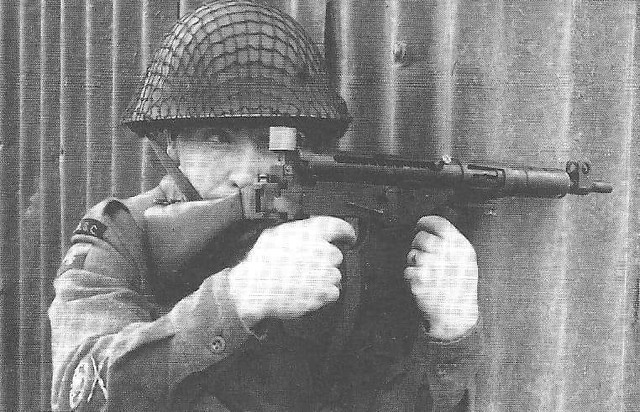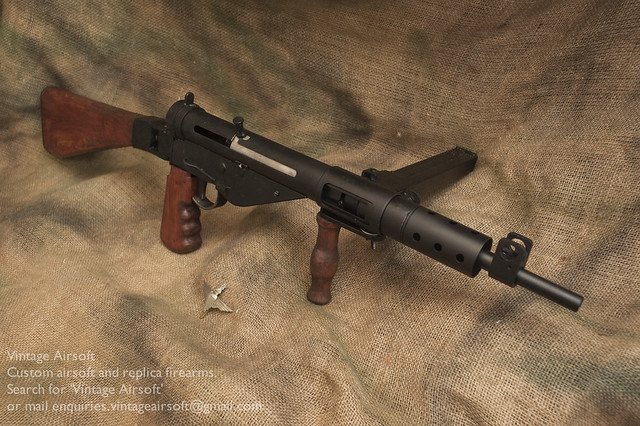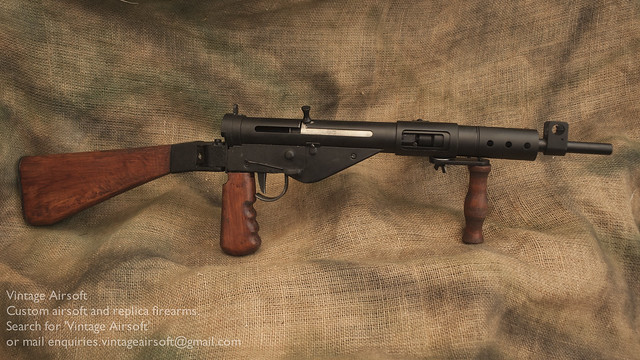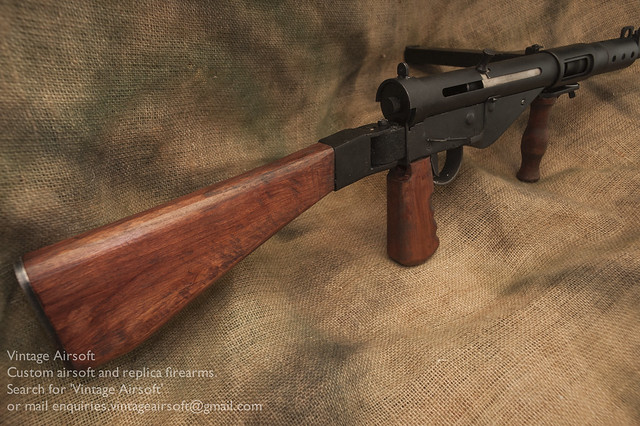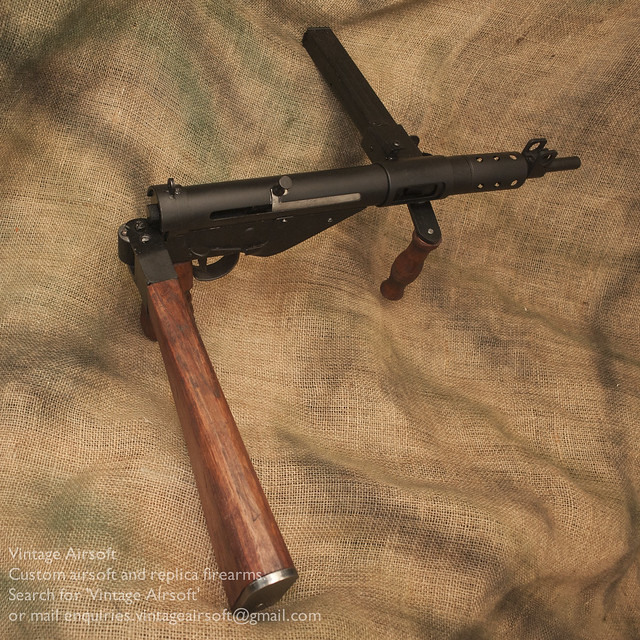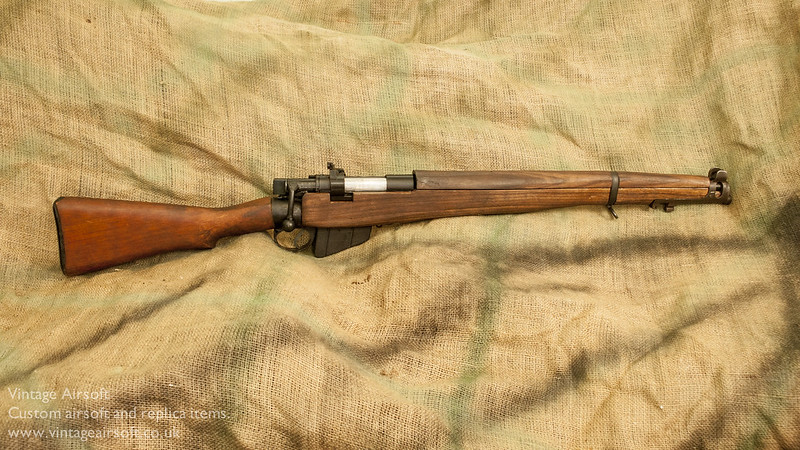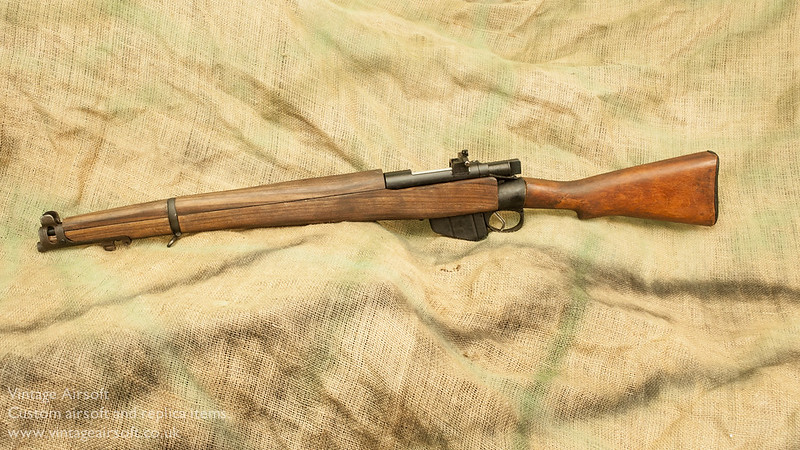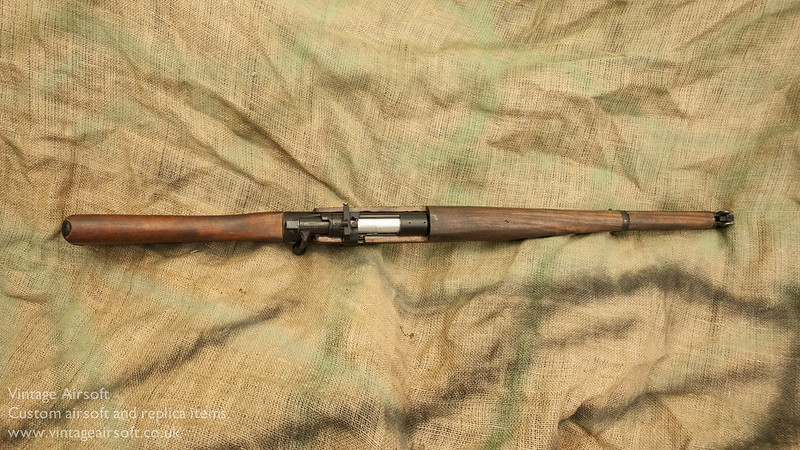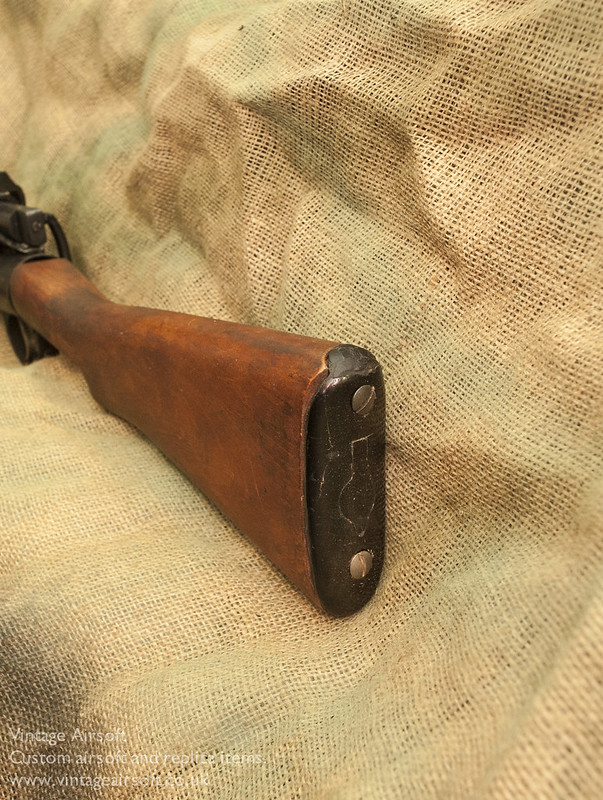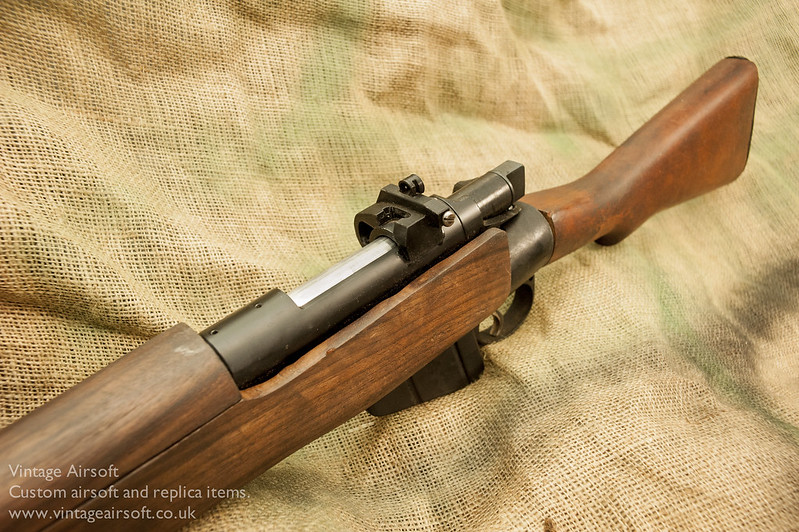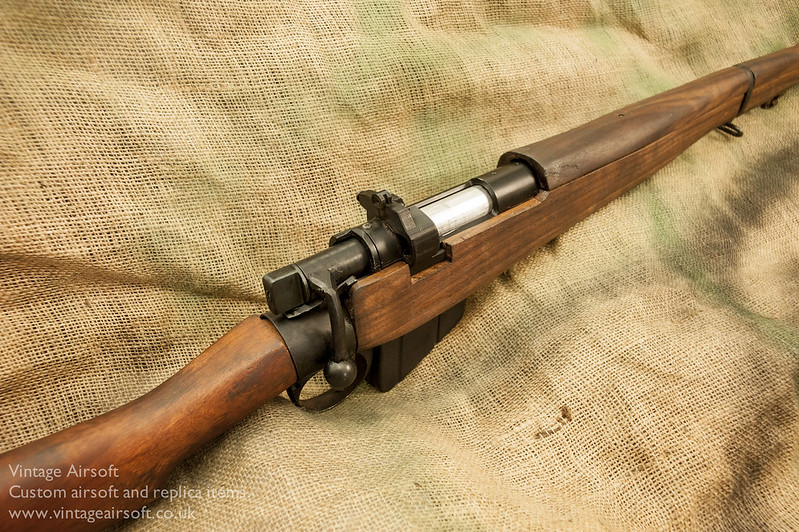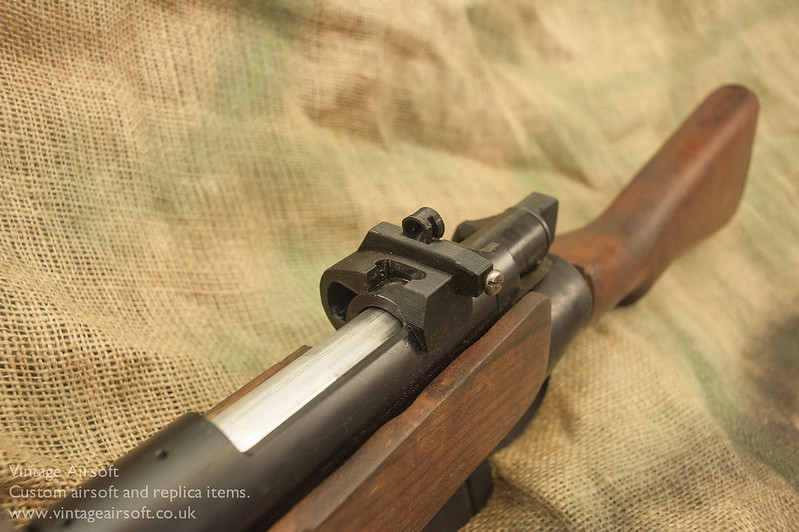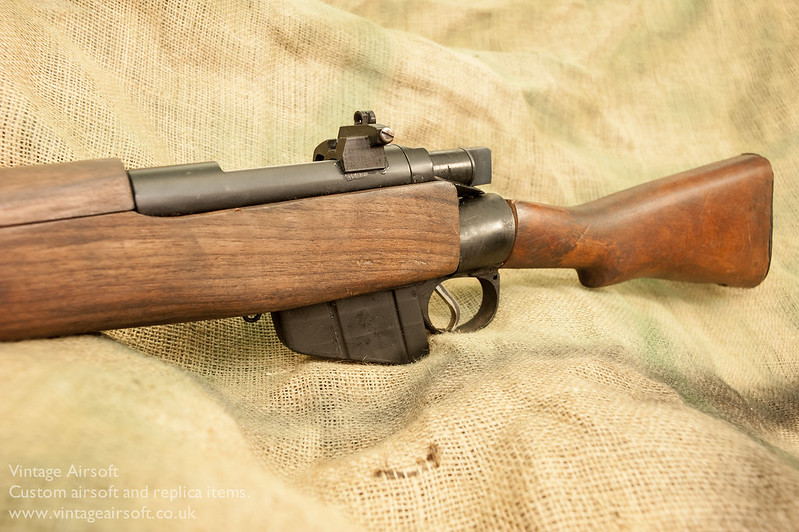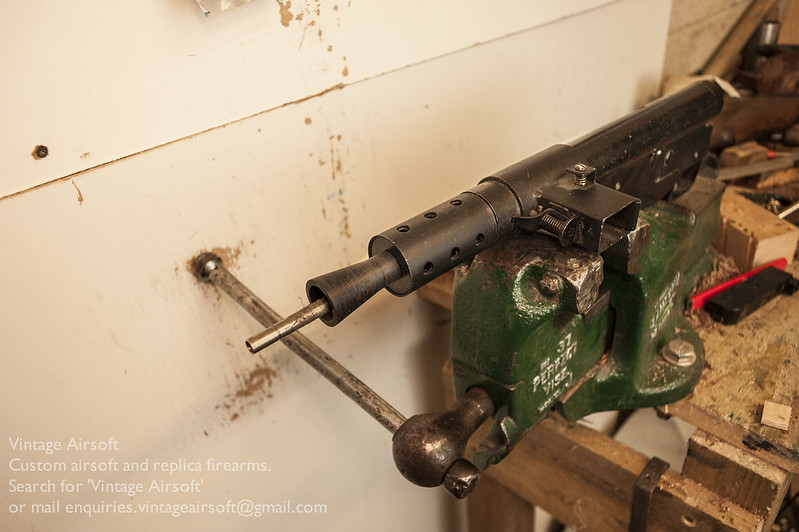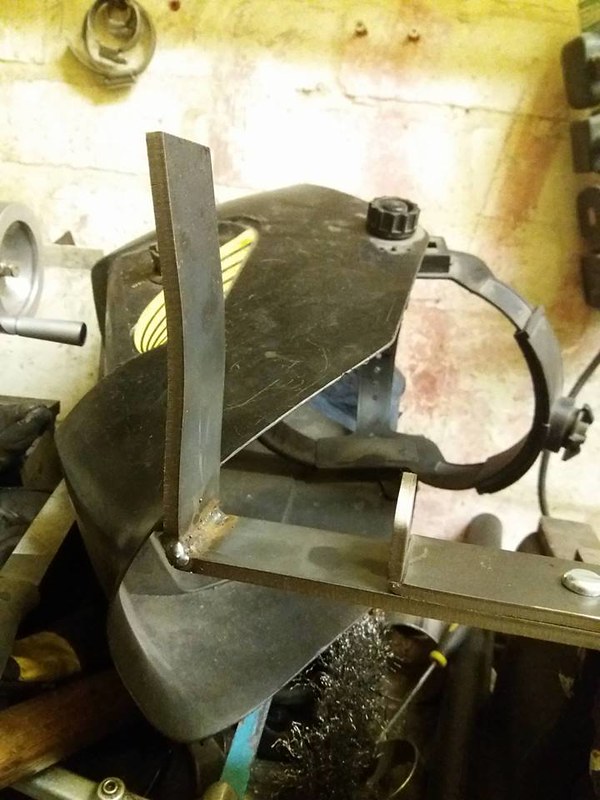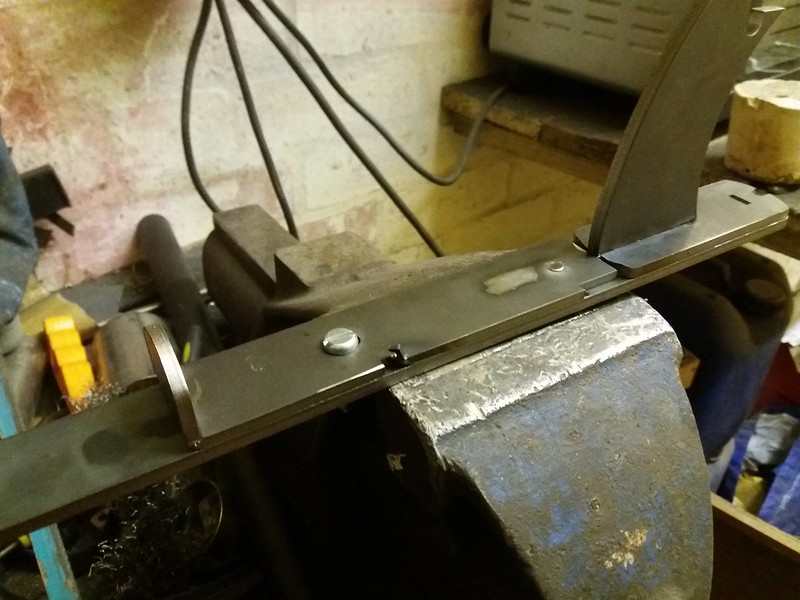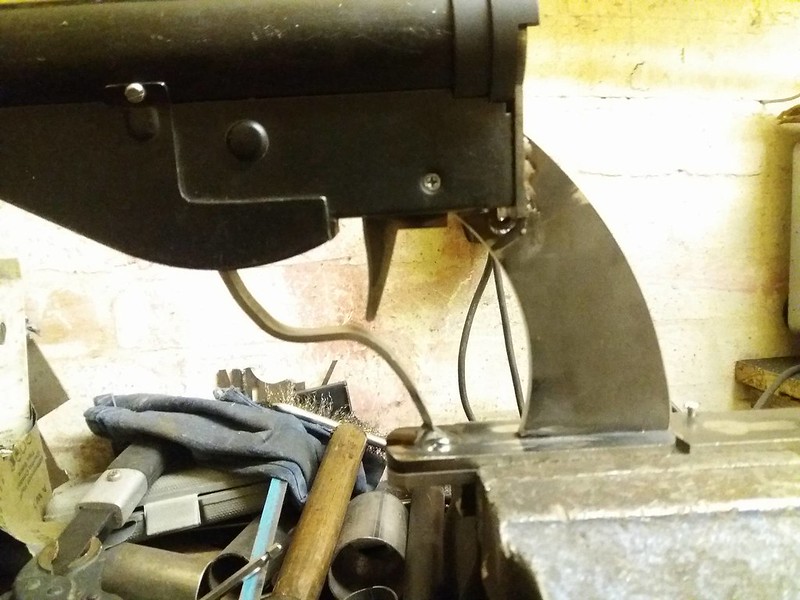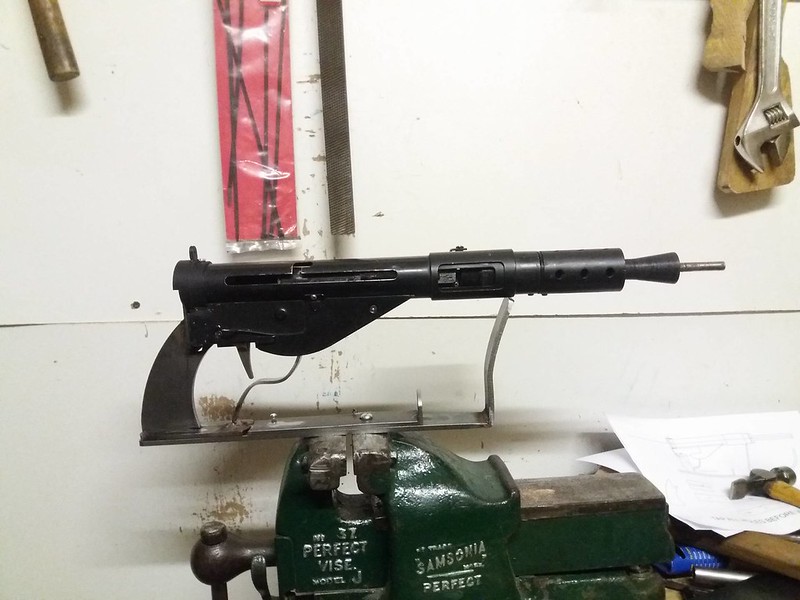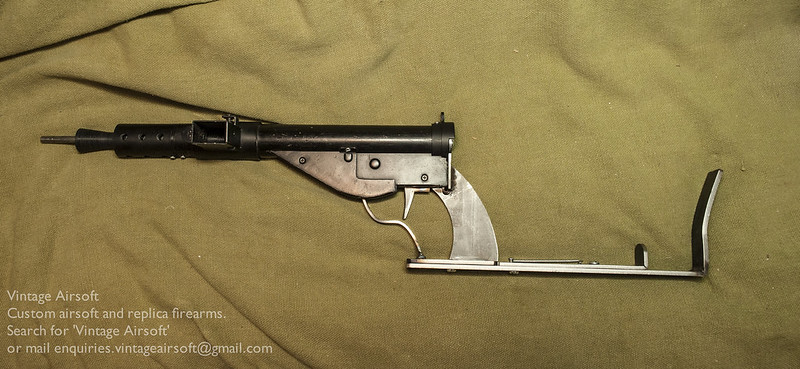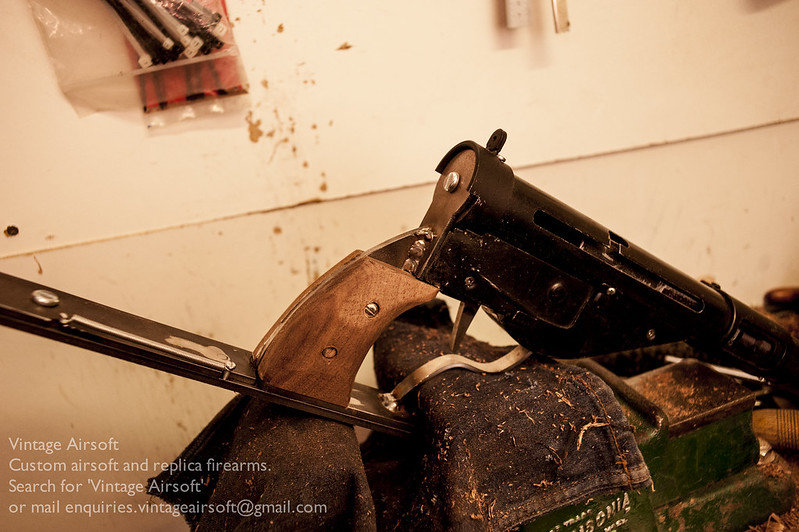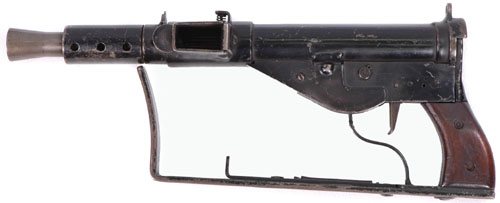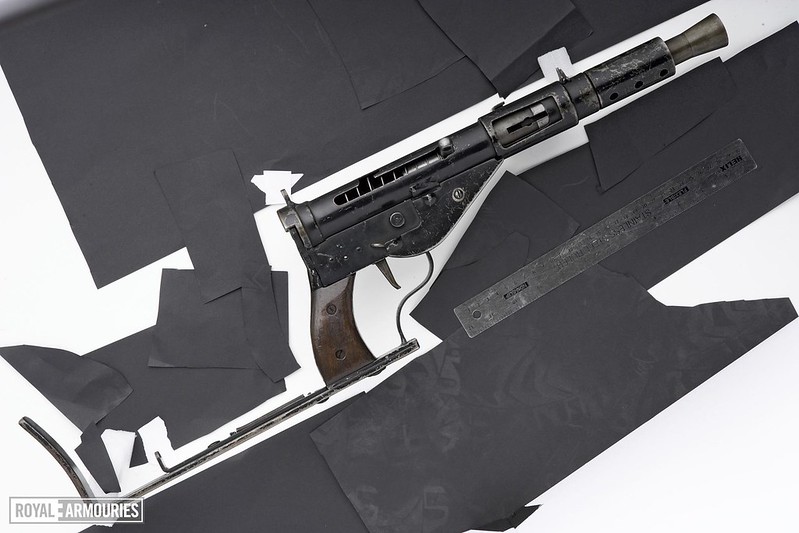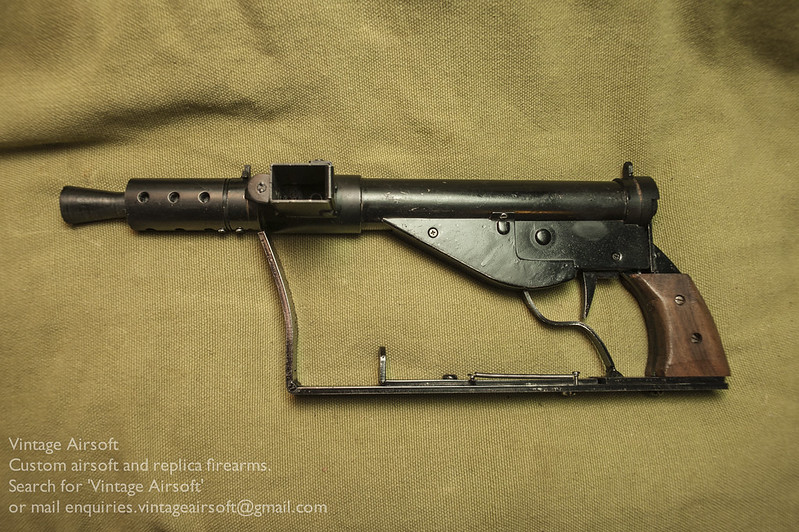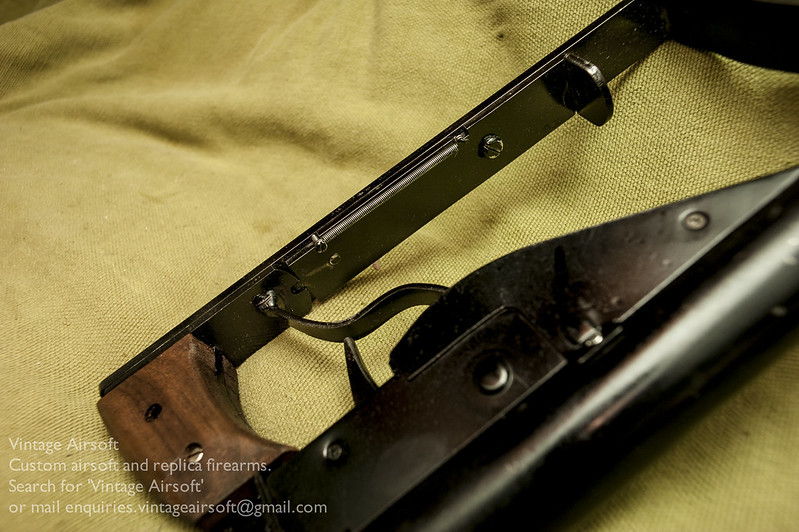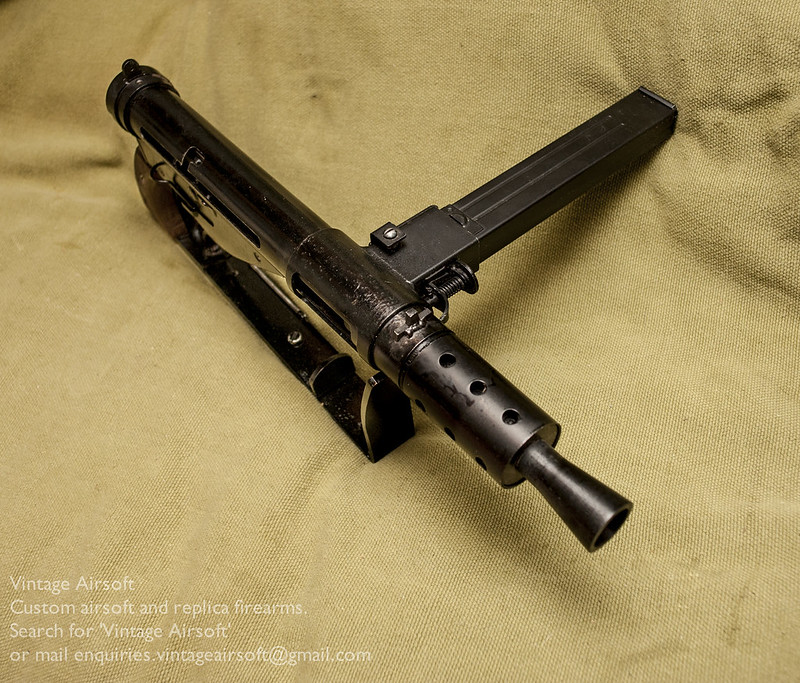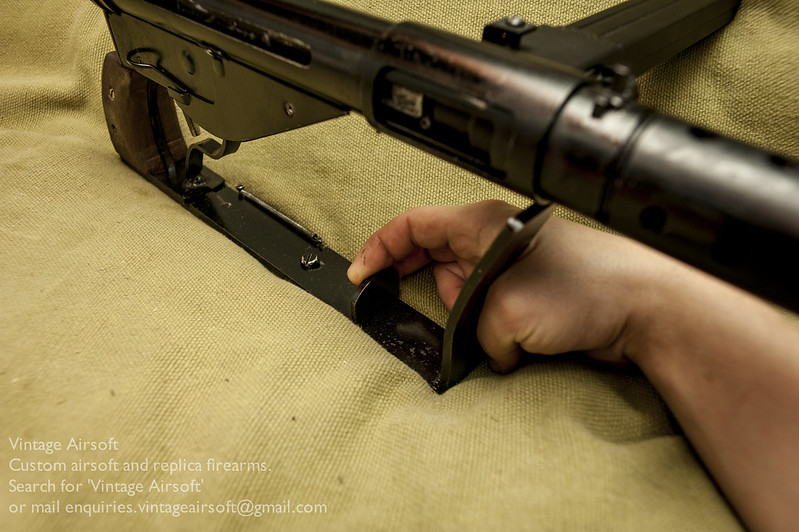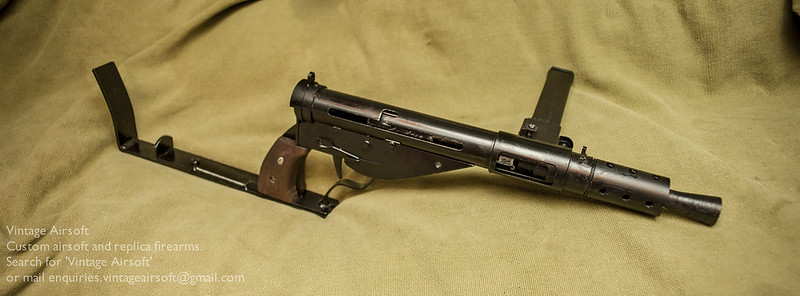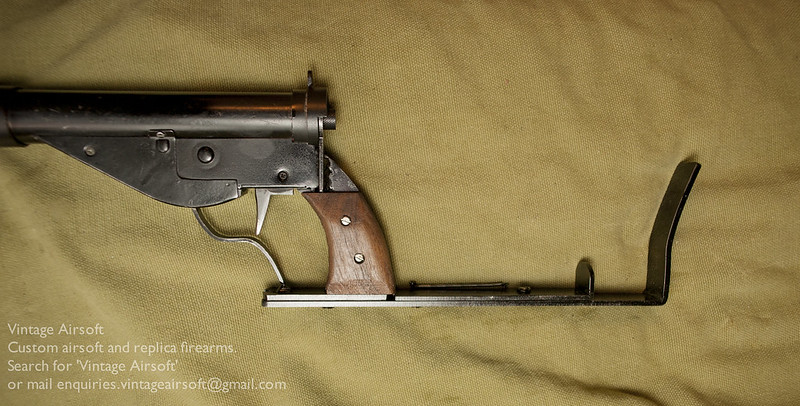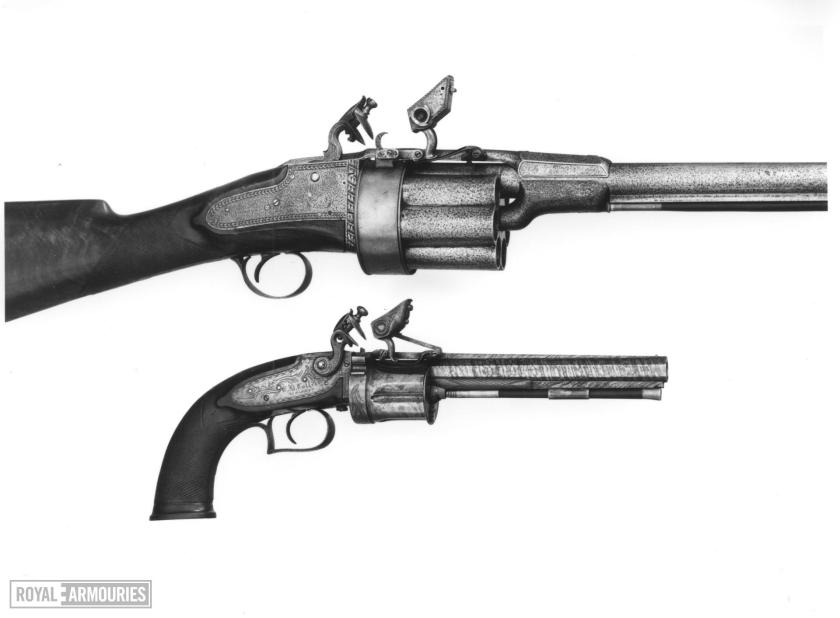On a Facebook group a few months ago, someone shared a picture of something I had never seen before. As time has gone by, it has become rare for this to happen to me in the world of firearms.
Yes, that is a Sten Mk5. Yes he is shooting it around a corner using a folding stock.
Although it’s not really practical for airsoft, where shooting without looking (blind fire) is a banned practice, it was such a distinctive and interesting idea it had to happen. This is what a Cornershot carbine looks like in the late 1940s.
At first glance, it looks like a standard Sten Mk5. I turned down the barrel to make it slimmer and more shaped like the original.
From the side, you can see the slightly longer joint for the buttstock.
The wood pattern is pretty much identical.
The swivel function is controlled with the silver button. This is depressed, the stock is swivelled 90º one way or another and the spring-loaded button locks into place. At the same time, the foregrip is loosened with the thumbscrew, moved into place and tightened down. This is one area where I have deviated from the original which used a hex nut: carrying a spanner around in the field wouldn’t be practical.
You will notice that there is no prism sight on this. I looked into getting a pentaprism as used by the original, but the cost would have nigh-on tripled the price of the build.
To round off: a couple of views of it folded different ways.
So far as I can tell these were never properly trialled beyond the one prototype. I imagine that managing recoil and maintaining a sight picture would have been tricky, the prism would have been expensive and limited the soldier’s field of view.
If any reader has any information on these carbines, better quality original photos or recognises the magazine the snippets above have been taken from I would be very much obliged if you would get in touch on the email below.
If you are interested in this build you can see the rest of the project here. If you have an idea of your own, drop us a line on enquiries.vintageairsoft@gmail.com to discuss. ‘Like’ our Facebook page or follow the blog to get regular updates on projects and interesting videos and articles.
Don’t forget you can buy VA products on the website where this will be available.

